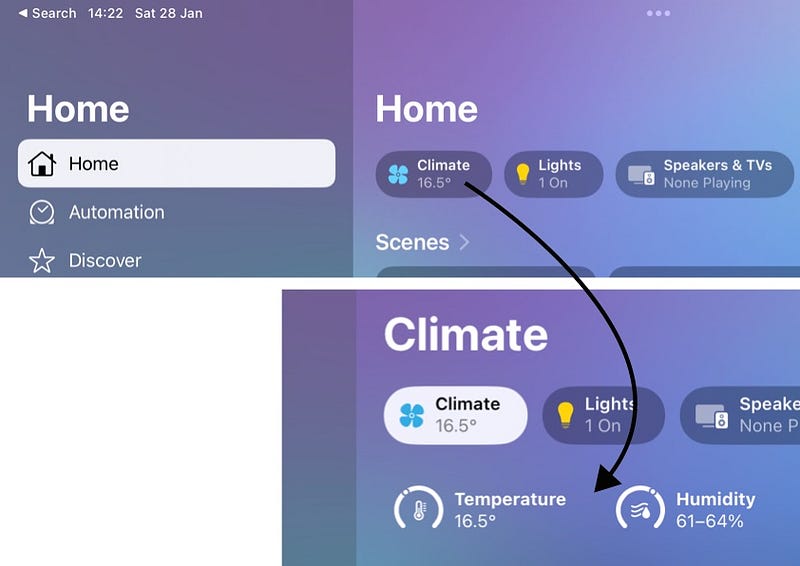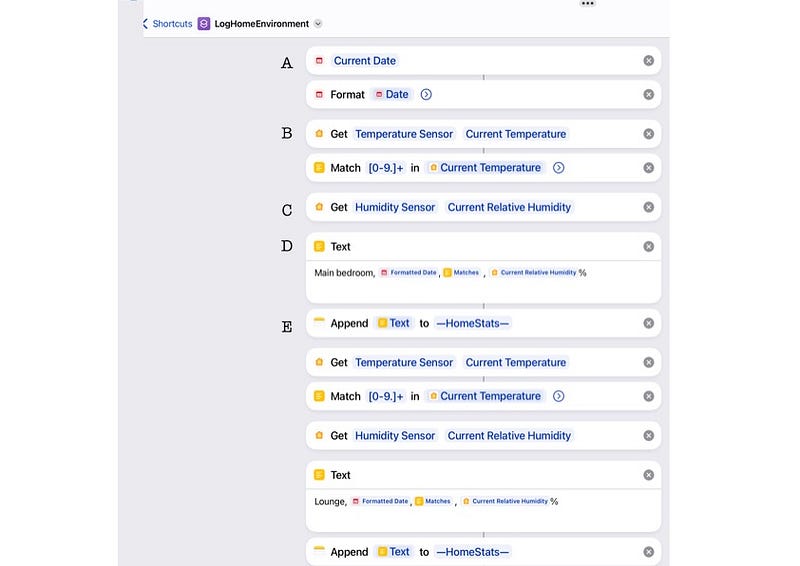Unlocking Home Automation: Monitor Room Temperature & Humidity
Written on
Chapter 1: Introduction to Home Automation
In this section, we will explore how to manage room temperature and humidity using Apple's HomePod Mini or HomePod v2, specifically focusing on controlling heating systems and logging daily climate conditions.
Apple has integrated temperature and humidity sensors into its HomePod Mini and HomePod v2, although this feature was not widely advertised. Monitoring room temperature and humidity is crucial, as both factors can affect health. While the importance of temperature is well-known, high humidity can lead to issues for individuals with respiratory conditions like asthma, as well as fostering mold growth.
With a HomePod Mini or HomePod, you can not only check the current temperature and humidity levels but also take action. By utilizing HomeKit, you can automate devices like heaters or dehumidifiers based on the readings.
The following video provides insights into the HomePod's functionality:
Chapter 2: Understanding Humidity and Its Effects
What makes relative humidity important? The HomePod Minis can measure relative humidity, which is a significant health factor. High levels of humidity can lead to discomfort and health issues.
To clarify, relative humidity refers to the amount of moisture in the air compared to the maximum it can hold at a given temperature. This is different from absolute humidity, which simply measures the actual amount of water vapor present. Maintaining relative humidity between 35% and 50% is recommended by the US Environmental Protection Agency to ensure a healthy environment.
If humidity levels are too high, you can ventilate your space by opening windows or using a dehumidifier, both of which can be controlled through HomeKit.
Section 2.1: Getting Temperature and Humidity Readings
If you simply want to check the temperature or humidity, you can easily ask Siri:
“Hey, Siri, what’s the temperature in the lounge?”
“Hey, Siri, what’s the humidity in the lounge?”
Alternatively, you can access the Home app, where you can find this information displayed prominently.

Chapter 3: Automating Climate Control
One of the primary uses of these sensors is to automate your environment. For instance, if a room's temperature drops too low, you can trigger a heater to turn on. Likewise, if it becomes too warm, you can switch it off, and a dehumidifier can also be activated when necessary.
To achieve this, you can set up a HomeKit configuration with devices such as a HomePod Mini and a smart plug connected to your heater.
The following video offers tips for maximizing your HomePod experience:
Section 3.1: Setting Up Automation
To create a temperature-responsive automation, follow these steps:
- Open the Shortcuts app on your device.
- Choose Home Automation.
- Select the relevant room and sensor to monitor.
- Set your temperature thresholds to avoid rapid cycling of the heater.
Ensure that your activation and deactivation thresholds are distinct to prevent potential damage to your devices.
Chapter 4: Logging Temperature and Humidity
To enhance your home's climate, it's essential to track temperature and humidity over time. One-time readings aren't particularly useful for identifying trends. Unfortunately, HomeKit lacks a built-in feature to log these metrics automatically.
To work around this limitation, you can create a shortcut that records the temperature and humidity readings in Apple Notes. This involves several steps, including configuring the necessary actions and automating them to run at specific times throughout the day.

Chapter 5: Conclusion
While setting up HomeKit may not be as complex as networking configurations, it requires careful planning and organization. As you expand your HomeKit setup, the accumulation of rules can lead to confusion about the overall functionality.
HomeKit has the potential to be a powerful tool for home automation, but improvements are needed to simplify the user experience and ensure reliability.
For further insights and detailed instructions, read more from Will J Murphy and other writers on Medium.